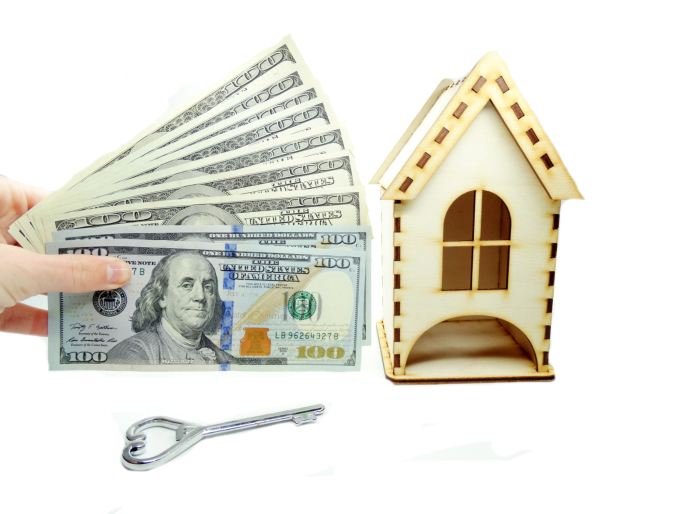An Overview Of Electronic And Smart Locks
A lmost everyone has been locked out of their home before. If you do not have a hidden key or someone else with a key, it can be stressful to wait for a locksmith to come and open the door. Fortunately, there are ways homeowners can address this issue, and one of the options is to get a smart lock or an electronic lock instead.
lmost everyone has been locked out of their home before. If you do not have a hidden key or someone else with a key, it can be stressful to wait for a locksmith to come and open the door. Fortunately, there are ways homeowners can address this issue, and one of the options is to get a smart lock or an electronic lock instead.
How Smart Locks And Electronic Locks Work
Every smart lock is different; however, they have a few themes. Basic electronic locks have a combination that someone has to enter before the door unlocks. Other electronic locks use fingerprints, RFID, or Bluetooth recognition to allow someone to enter. Many smart locks also allow the owner to give out digital keys that allow friends, children, and other people to come and go. The combinations are stored and act as a digital log of who has entered the home.
The Benefits Of Using Smart Locks And Electronic Locks
There are a number of benefits that come with using smart and electronic locks for homes. First, homeowners never have to worry about getting locked out of the house, as they don’t have to worry about losing manual keys. Second, homeowners can keep track of people, including their children, as they come and go. Finally, smart locks do not necessarily have to be rekeyed or replaced. Homeowners can change the combination when they feel it is nessesary..
Choosing The Right Electronic Lock
Even though smart locks and electronic locks have a variety of benefits, it is important for homeowners to think carefully about which option is best for them. Homeowners need to make sure whatever lock they choose is compatible with their phone. They also need to select locks that have security measures in place that prevent people from cracking the code or getting through the keypad. Finally, take a look at how many combinations the lock can handle. Sometimes, homeowners like to assign people specific codes so they know exactly who is coming and going. Some locks can even be customized so that certain combinations only work on certain days. This can be helpful if there is a maid or tutor who comes from time to time.

 When delving into the world of real estate and investment property, there are many terms that will come up that require further explanation. Whether you’ve never heard the phrase ‘home equity’ before or you have a little familiarity, here are the ins and out of what it means and how this asset can help your financial outlook.
When delving into the world of real estate and investment property, there are many terms that will come up that require further explanation. Whether you’ve never heard the phrase ‘home equity’ before or you have a little familiarity, here are the ins and out of what it means and how this asset can help your financial outlook. The real estate market is rife with terminology that can make a home purchase seem more than a little complicated. If you’re currently looking for a home and are considering your loan options, you may have even heard the term ‘Debt to Income’ ratio. In the interest of simplifying things, here are some insights on what this term means and how it can impact your home investment.
The real estate market is rife with terminology that can make a home purchase seem more than a little complicated. If you’re currently looking for a home and are considering your loan options, you may have even heard the term ‘Debt to Income’ ratio. In the interest of simplifying things, here are some insights on what this term means and how it can impact your home investment. There are many homeowners who are looking for help with storage. Even after moving in, many homeowners still have a lot of items they need to get rid of and this is where built-in storage solutions can be helpful. Even though some storage options might be pricey, there are inexpensive options available as well. Take a look at a few solutions below, and improve the storage situation.
There are many homeowners who are looking for help with storage. Even after moving in, many homeowners still have a lot of items they need to get rid of and this is where built-in storage solutions can be helpful. Even though some storage options might be pricey, there are inexpensive options available as well. Take a look at a few solutions below, and improve the storage situation.  Houses across the country come in all shapes and sizes. Some of them are older than others, so they might come with aspects that are a bit outdated. Unfortunately, there are a lot of locations where older homes might still have asbestos in them. While this should be something that comes up on the inspection, buyers need to be aware of these serious issues. If the home was built before 1980, there is a major chance that the building might have asbestos in it. Fortunately, there are alternatives to this type of insulation.
Houses across the country come in all shapes and sizes. Some of them are older than others, so they might come with aspects that are a bit outdated. Unfortunately, there are a lot of locations where older homes might still have asbestos in them. While this should be something that comes up on the inspection, buyers need to be aware of these serious issues. If the home was built before 1980, there is a major chance that the building might have asbestos in it. Fortunately, there are alternatives to this type of insulation.